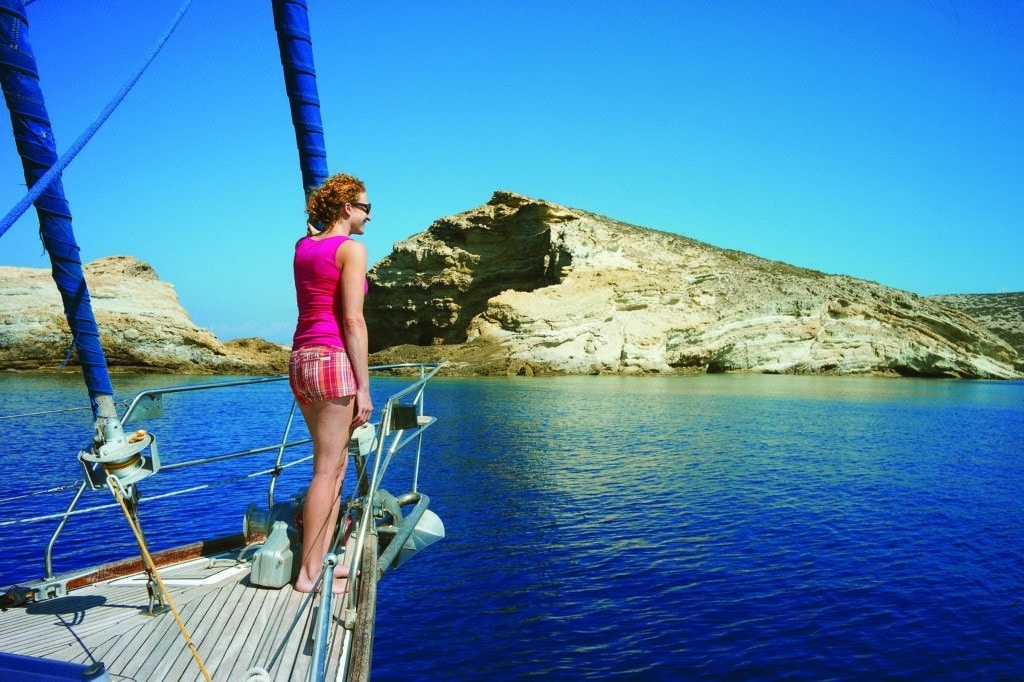
On a cold winter day my fiancé, Michael, has a sudden inspiration: He wants to fulfill his dream of sailing in Greece. Without hesitation, I agree. Michael is an experienced sailor; I am a recent convert. We decide to charter a yacht with captain and crew who can give us an insider’s view of the islands. A mutual friend recommends Greece Sailing Charters, and we are introduced to American first mate/cook Lynda Childress, her Greek husband, Capt. Kostas Ghiokas, and their Atlantic 70 cutter, Stressbuster. We say we’d like a loose, two-week itinerary that follows the wind to their favorite places.
We arrive at the marina south of Athens in late September; the weather is warm and perfect. Lynda greets us as we board Stressbuster, and the four of us pore over charts, Kostas pointing out the well-known islands as well as the less touristy places that are among our crew’s favorites. Today, the forecast is in our favor, and we vote to sail east, toward the Cyclades.
Greece’s seasonal strong north wind — the meltemi — usually ends in September after a long, hot, rain-free summer, but as we sail, today’s predicted northerly of Beaufort Force 3 to 4 (7 to 16 knots) morphs into a meltemi-like Force 5 to 6 (17 to 27 knots). Originally bound for Kea, the usual first stop for boats approaching the Cyclades from Athens, we alter course slightly downwind, for Kythnos, instead. This point of sail will allow easier motion onboard and avoid characteristically rough seas near Evia Strait on the approach to Kea. We begin to see why our flexible approach to an itinerary is the ideal way to sail here.
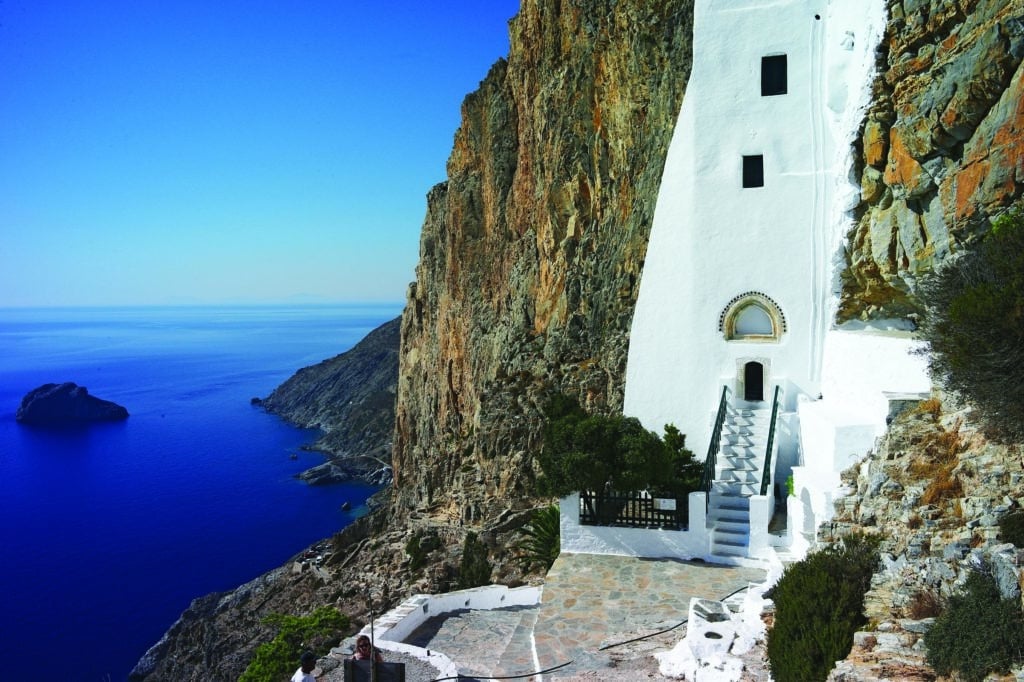
The day is perfect; the boat sails well. We barrel along at 7 knots. Our captain navigates easily; it’s clear he knows these waters like the back of his hand. Delicious aromas waft from the galley as Lynda cooks lunch: oven-roasted-vegetable and feta casserole and fresh bread. By late afternoon, we are docked stern-to in Merikhas Bay, Kythnos. On the quay, fishermen clean their nets by beating them with mallets as freshly caught fish are iced, boxed and walked to a nearby taverna. The town is bathed in sunlight. Painted white flowers adorn the walkways in the village, a sea of whitewashed buildings, blue doors and grapevines. The hills are a variation in umber. That night, we drift off to sleep as the wind makes harmonies in surrounding rigging.
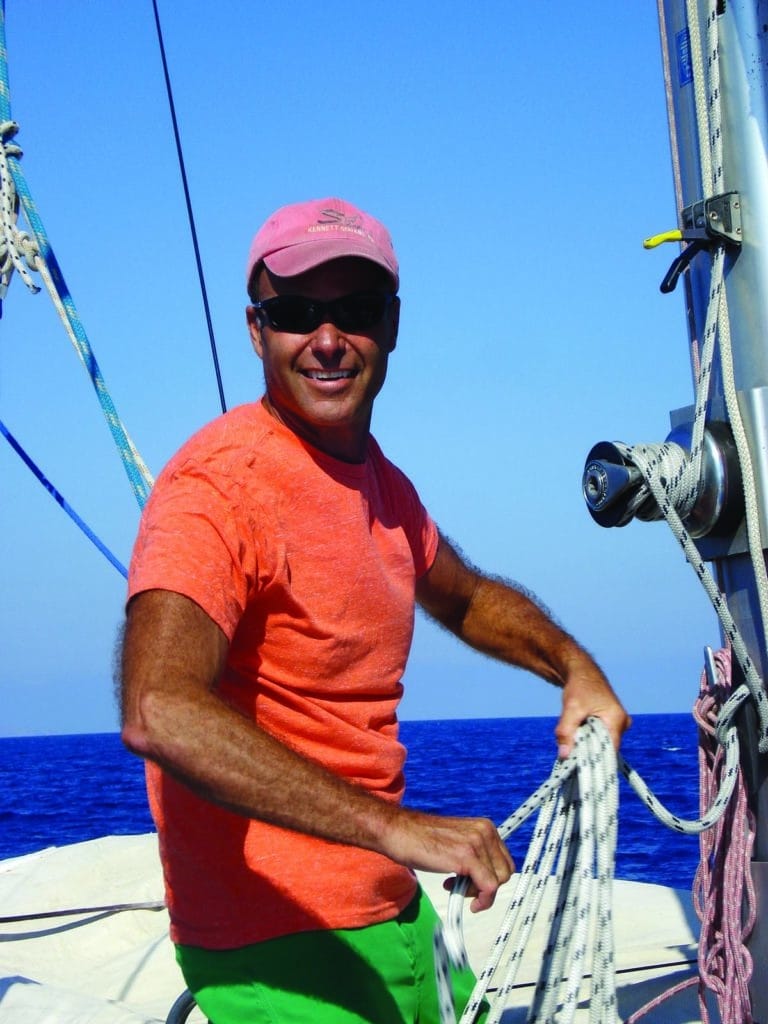
A day later, puffy clouds have arrived, adding dimension to an otherwise blue sky and ceaseless sun. We set sail for Paros, 35 miles southeast. The wind is light northwest; we ghost slowly by islands that seem to last forever, reaching Paroikia harbor on the island’s northwest side by late afternoon. It is here that I realize Greece is truly a land of color: multihued trim and doors on white Cycladic houses; gaily painted small fishing boats; bright, rainbow-colored taverna chairs — and always, that deep blue sea and sky.
Paros is a busy harbor; ashore, there is a constant hum of waterfront traffic. The Old Town at the harbor’s west end, with its cobbled footpaths, is an oasis: beautiful white structures house residences and shops framed by shocking-pink bougainvillea. Sounds drift by: a radio, dishes in a sink, a man singing with a child. Somewhere out there is the sea, but this enclave of winding walkways is a different world.
This is a huge island; we decide to linger another day. In a rented car, we explore beautiful deserted beaches; and the fishing village of Naoussa, on the island’s north end, now also a bustling port graced by brightly colored caiques and the impressive remains of a Venetian castle. On wheels, we circumnavigate the island, summiting its highest peak for stupendous views of the sea and surrounding islands. Midway up, we pause while a shepherd moves his flock across the winding road. We feel like we’ve stepped back in time.
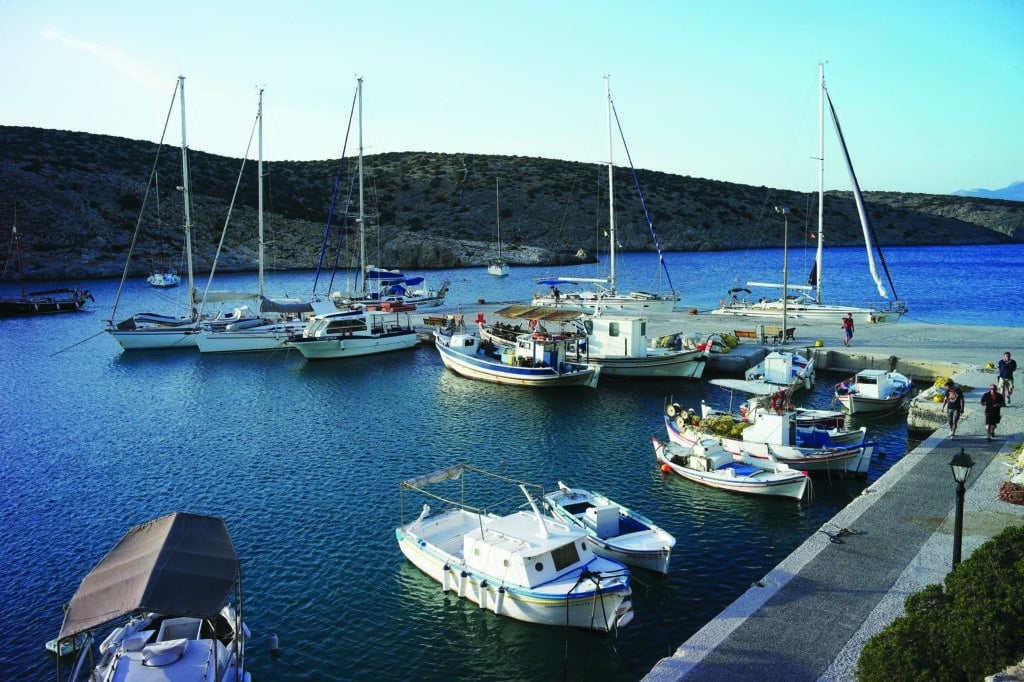
The next day, we ride a robust northwest wind south, then east to Naxos. Although this is one of the more popular islands, we are not headed to busy Naxos Town, but to a secluded cove our crew makes us swear to keep secret. We’ve just dropped the hook when a streak of brilliant blue breaks the water abeam: It has the unmistakable profile of a mahi-mahi — and it’s not alone. There are hundreds of them, and we watch them cavort for the next several hours. The Greeks call these tasty beauties mayfish because they appear first in May, then not again until September. The captain attempts to catch dinner, but the mayfish aren’t interested. Lynda and I agree we’re glad — they are far too pretty to eat. Ours is one of only three yachts here; a deserted sandy beach wraps around the cove beneath a massive mountain. A hike beckons. Beyond the beach is a marsh, with a freshwater stream that attracts wildlife. We watch as an egret stalks the shallows for fish, and are surprised by three wild pigs rooting for food. Back aboard, our crew has been busy. We return to a feast: beer-battered grilled codfish with creamy garlic sauce, fresh beetroot-and-greens salad, and delicious Greek wine. The menu onboard Stressbuster consists of traditional, fresh Greek dishes we find both delightful and satisfying.
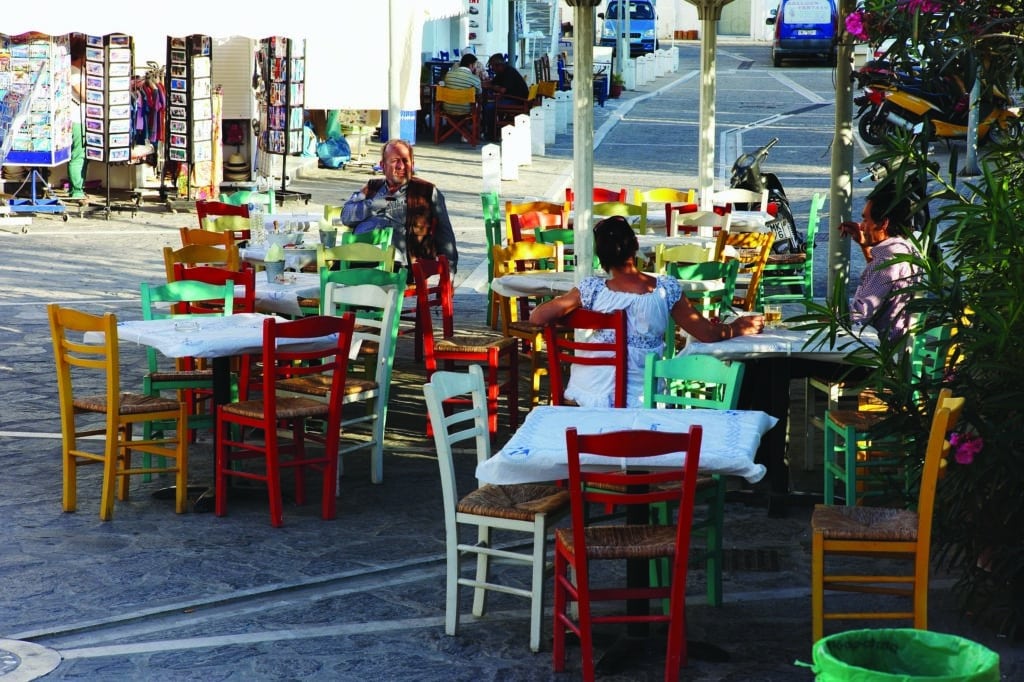
The wind is light northwest as we sail to the first of the “hidden” islands: Dhenoussa. The waning moon has followed us from Athens and the sea is as calm as a lake. We motorsail among the islets of Makares, past cliffs that are 300 feet high and twice as many deep. We meander, pausing frequently as Michael snaps photos: an uninhabited islet; an amazing rock formation; a lone red fishing boat. The slow pace reminds us that our trip is as much about savoring each moment as reaching the day’s destination. We dock at Dhenoussa and know we’ve truly arrived at Nowhere when we spot a sign in Greek that translates: “Welcome to Dhenoussa. Here, nobody can find you.” The pace here is s-l-o-w; locals drift in and out of the one small taverna, including a startling number of eccentric-looking ex-pats who seem to reaffirm the island’s motto. A small beach tempts us; we head ashore for an hour of uninterrupted yoga and a swim in the clear sea.
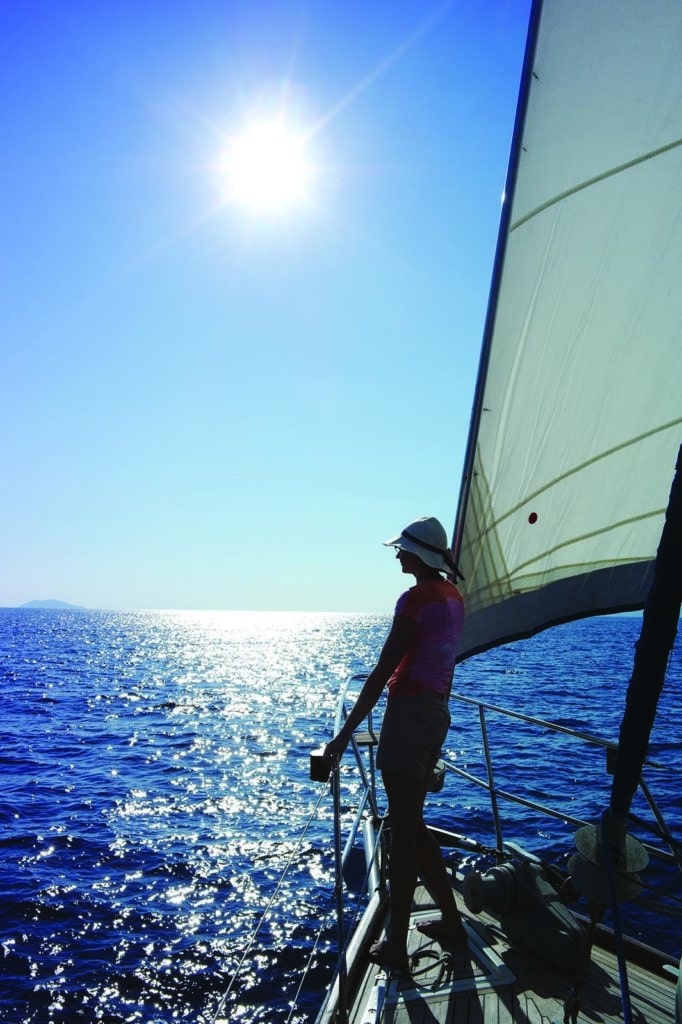
Sailing on to Amorgos, the morning wind is a light northerly. Kostas points out and names islands in the distance, and regales us with tales from Greek mythology. We read; relax; eat lunch under way. Approaching Amorgos harbor, we see hilltops graced by windmills and blue-domed churches. Securely docked, we walk; Michael samples figs, dates and grapes growing wild along the road. We pass olive trees and ancient grapevines thicker than my neck. Around the quay there is color everywhere: red, green, blue, lilac, orange.
In the morning, we decide Amorgos deserves an extra day. We rent a car and drive up … and up. The view below grows more spectacular; pausing on a mountaintop, we think we spy dolphins leaping in the crystal-clear sea below, then realize they are not dolphins but huge tuna. As we near the island’s famous Monastery of Panagia Hozoviotissa, the road winds down precariously. Not for the first time, I experience vertigo. On foot, we climb again; up a steep incline and stone steps. A massive white wall clings to the cliff face: The monastery is monolithic; only 16 feet wide and steeply vertical. The sight is so astounding it is almost surreal. Farther on, there are ruins of an ancient village. Everywhere we see beauty, culture and history. We are awed by these incredible islands, and we’re glad we allowed time for both sailing and exploring ashore.
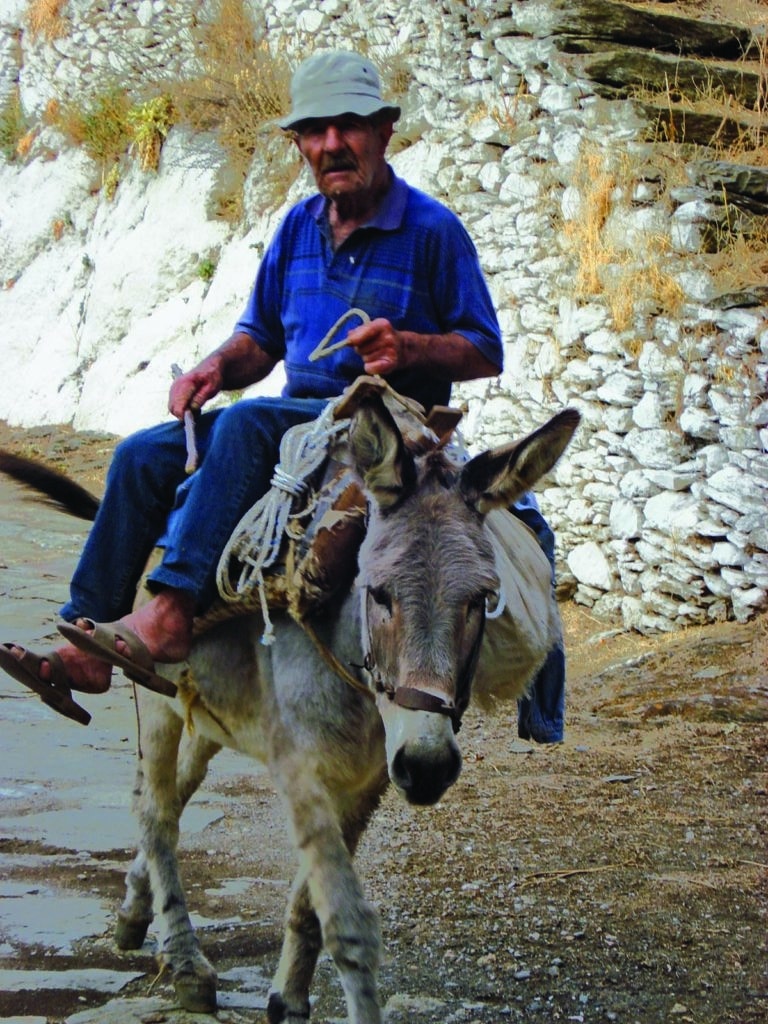
From Amorgos, we set a course almost due west for the next hidden island: Iraklia. The wind dies; then a sea breeze fills in from the south, giving us a glorious beam reach. In the harbor, there are a few visiting yachts, but the small village is sleepy, with a couple of tavernas, a small market, a sandy beach and little else. At dusk, we amuse ourselves by watching an old man in a pram fish for dinner while his wife issues orders from shore. We can’t understand her, but deduce that if he returns empty-handed, he’s in trouble. Kostas checks the weather forecast; thunderstorms are predicted by midday tomorrow, so we decide to leave before dawn to beat the weather to Kea, a long passage north, but necessary for a favorable point of sail in predicted strong northerlies as we leave the Cyclades and sail west toward Athens in the following days. It is a long morning, with frequent rainless squalls and changeable winds; by afternoon, the sun is shining as a lighthouse welcomes us to Agios Nikolaou. It is blowing hard, but we Med-moor securely. We grab a taxi to the mountaintop village to see Kea’s ancient and impressive stone lion, a rock sculpture believed to have been carved in about 600 B.C. Cars are prohibited inside the village perimeter; the streets are winding and narrow. Everywhere are breathtaking views of the surrounding sea. As we walk, two men pass by on donkeys. Later, a dramatic sunset, dinner at a seaside taverna and dueling fish stories top off the night.
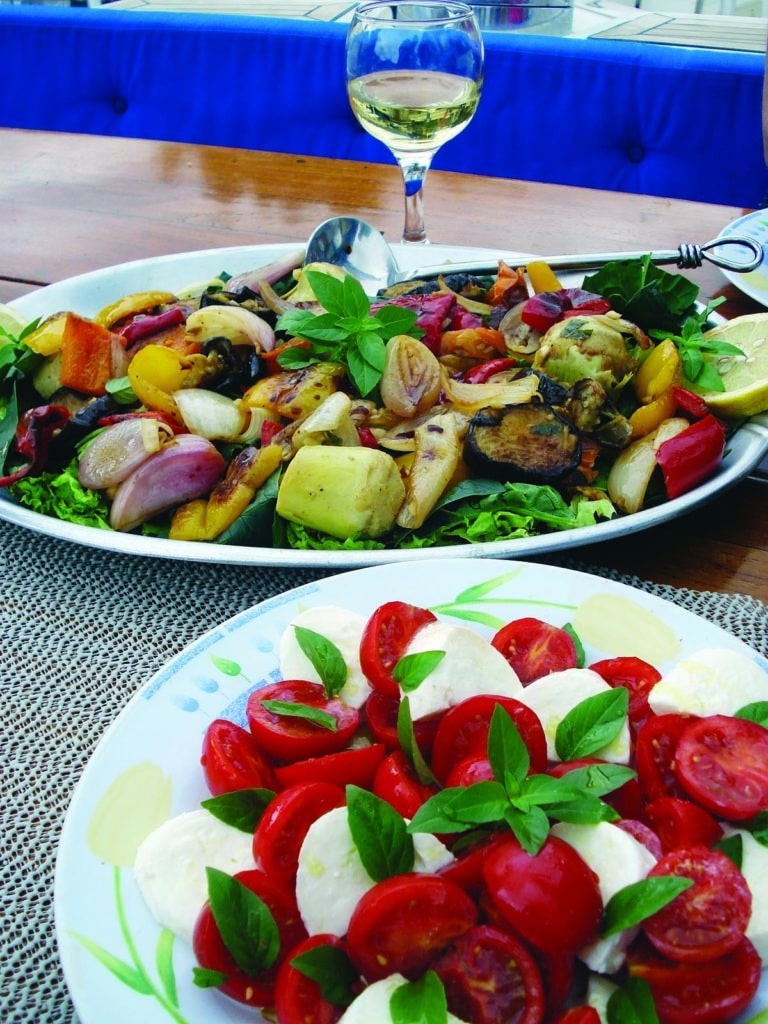
We have two more days, and the weather forecast continues unsettled: rain, squalls and winds from the north at Beaufort Force 5 to 6 for the duration of our trip. We have two choices: Either stay another day in Kea or leave at dawn tomorrow and sail on a long broad reach across to “the other side” — the island of Poros in the Saronic Gulf, southeast of Athens. This is appealing for three reasons: We’ll get to see one more island; Poros offers better shelter from the predicted weather; and it is relatively close to Stressbuster‘s base near Athens, making for a more relaxing last day’s sail.
Just after daylight we get under way; it is cool, windy and gray. We bundle up and set sail; the wind drops to Force 5 and we enjoy a vigorous broad reach across the Aegean. As we approach Poros from the east, we pass through a narrow channel. Lynda tells us Poros is geographically the closest island to the Greek mainland; to starboard is the island and to port the velvety green mountains of the Peloponnese. As we lunch in the cockpit — filling and delicious salads, fresh bread and wine — we notice a distinct difference in architecture: Multicolored houses, offset by red tile roofs, adorn the town. After the arid Cyclades, the surrounding greenery is almost overwhelming.
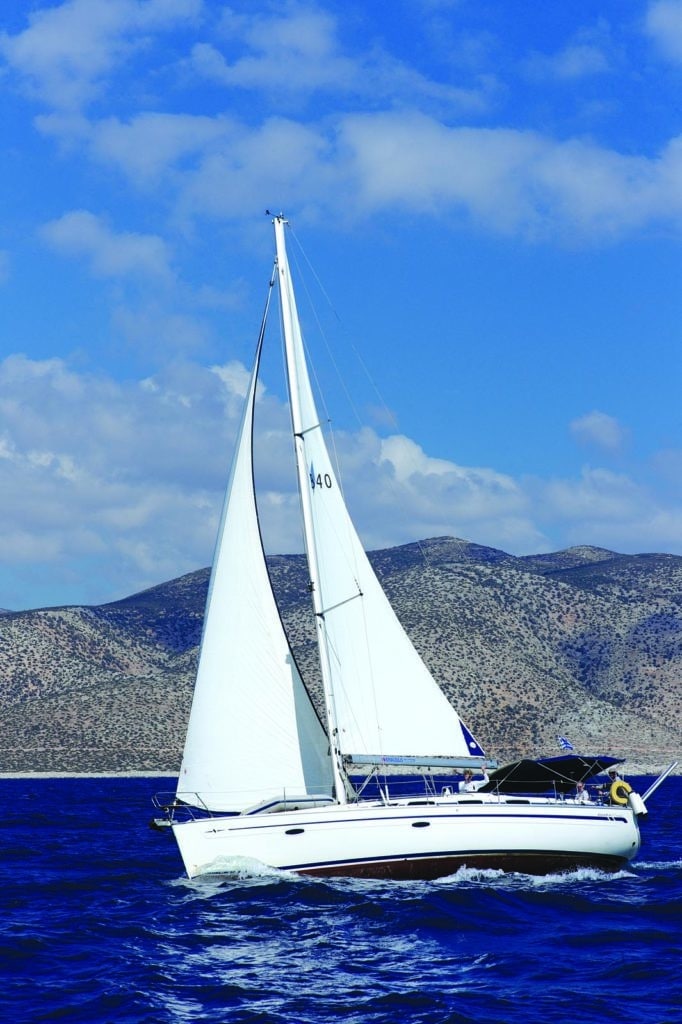
As we sail for Athens the next afternoon, we are already talking about returning. We’ve reveled in days filled with sunlight, fair winds, beautiful sights and an overwhelming sense of relaxation. The crew has kept their promise: We are well and truly Stressbusted. Michael’s dream is now a shared one, and we agree that the days have passed far too quickly. Next time …
Christine Yurick is a musician, writer and poet. Michael Kahn is a nautical fine-arts photographer known for his stunning images in black and white. His work has been featured in museums, galleries and publications worldwide. To see more of his photography log on to his website www.michaelkahn.com. The couple live in Pennsylvania, and sail whenever the opportunity arises.
This article first appeared in Cruising World March, 2014. Ready to plan a charter? Visit Cruising World’s Charter Directory to learn more.








